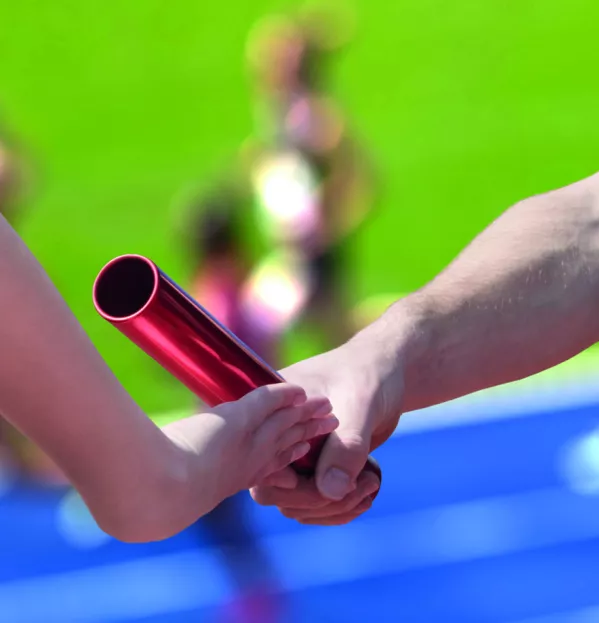In most sports, a setback leaves room for a comeback. Your opposing football team has scored a goal? You get the ball straight back and push forward for an equaliser. The player on the other side of the tennis court wins a brutal rally? Never mind - it’s only one point.
Not so in athletics relays, where a team must master three “handoffs”. This is when a sprinter hands a baton over to a teammate while maintaining momentum: fluff the exchange and the team’s race is over. It’s a precarious technique, balancing speed and precision, which has seen even some of the best teams crash out. If the baton drops to the ground, you’ve lost - even Usain Bolt would not get you back in the race.
This critical phase of the relay, ripe with stress about the drastic consequences if you get it wrong, has echoes of what in education has come to be known as transition.
Moving from one phase of education to another used to be - at least in the nuts and bolts of the process, if not the impact on pupils - a straightforward affair. You would walk out of P7 before the summer and into S1 after the holidays and, for most of us, this was all that transition entailed: no visiting the big school, no getting to know your new teachers and the older pupils, no tasters of the sort of classwork you would encounter.
No wonder, then, that some people struggled to make this jump, even if they had thrived in primary school. With transition, you sank or you swam.
Aline-Wendy Dunlop, emeritus professor at the University of Strathclyde, is an expert on transition, and will soon publish research that tracks its impact on children and young people over up to 14 years. It will suggest that poor preparation for transition can have long-lasting deleterious effects that last right into adulthood.
Schools, of course, do much more to smooth the way between different phases of education these days. But has it become quite the priority it should be? It’s one thing for a primary to invite in a gaggle of children from the neighbouring local authority nursery to have a look around, but does every primary go to the same lengths with, say, small numbers of children - or even individuals - who attend certain private nurseries? Some delegates at a recent transitions conference suggested not.
And do we really understand what transition means? Dunlop is keen for educators to look beyond the moves into P1 and S1 and see that, each day, there may be myriad transitions hampering a child’s progress - perhaps the journey from home to school, or the move from one classroom to another. In other words, transition is not simply a linear process, but more like a “web”.
There are deep-rooted attitudes to overcome if transitions are to become easier for children and their families (and researchers underline that parents can find the whole process as difficult as their children do). Why is it, for example, that even when a nursery and a primary share the same site, some parents find that primary school is “not participatory at all” - as one researcher put it - compared with the nursery?
Dunlop has found that poor transitions can have long-lasting effects. One boy, for example, used to love helping out nursery staff but never really understood that, at primary school, it was not his job to be the teacher’s assistant. Yet, this was how he approached school, which got up the noses of peers and distracted from his own learning, right through into secondary school. Now in adulthood, that boy has got his life on track - but with more successful transitions, he might have done so much sooner.
Getting transitions wrong, then, may not be quite as devastating as dropping the baton in a relay race - but it can still take a hell of a long time to recover.
@Henry_Hepburn
This article originally appeared in the 7 June 2019 issue under the headline “Drop the baton on transition and the effects will run and run”
